(Read this before you get rid of your bats!)
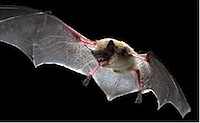
Bats are some of the most interesting, beneficial and exceptional mammals on the planet. As part of the mammal family, and not unlike humans, bats are warm-blooded vertebrates, with hair covering their skin, and bear their offspring live. Bats are perhaps the smallest of the mammals, and the only mammals capable of true flight. There are other mammals that can glide for short distances, like squirrels and possums, but bats are the only mammals capable of flying and keeping themselves in the air. In fact, bats are especially quick and agile, with exceptional “navigation systems.”
Bats are essential to the health of our natural world by helping to control pests, especially insect pests. Bats are also valuable in assisting with the pollination of flowers, and with seed dispersal of many different types of plants.

The vast majority of bats eat only insects and fruits. Most of the bats that live in the United States feed exclusively on insects. Bats are primary predators of night-flying insects, including many of the most agricultural damaging of insect pests. A single small brown bat can quite accurately catch and consume as many as 1,000 mosquitos, or equivalent-sized insects, in an only an hour. A pregnant or lactating female bat will typically consume her body weight in insects in a single night of feeding. This makes bats a natural and extremely useful means of helping to control insect populations.
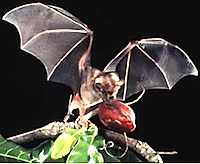
Insects are the primary source of food for more than two-thirds of the world’s species of bats. Almost a third of the world’s bats feed on the fruit or nectar of plants. In having this much contact with fruits and plants, these bats help to provide a vital service to the plants, and to the ecosystem, by helping to pollinate the plants and disperse the seeds.
About one percent of the world’s bats eat small vertebrates, such as mice, fish, or frogs.
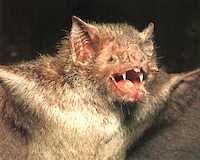
There are only three species of bats, all located in Latin America, that actually feed on the blood of mammals. These are the vampire bats. Vampire bats do not “suck” blood, but rather use their sharp teeth to scrape through the skin of a larger mammal, such as a horse, sheep or cow, and lap up the slowly oozing blood. Despite their unpopular reputation, no doubt due to centuries of myths and misinformation, and more recently, because of hollywood movies, even vampire bats are very useful. The saliva of vampire bats contains one of the most effective blood-clot dissolvers known, which is used to treat human stroke victims.
Most of the bats found in the United States emit high-pitched (ultrasound) sounds, generally too high in frequency for humans to hear, called “echolocation.” Bats use echolocation to communicate with each other, to navigate with impeccable accuracy, and to avoid obstacles coming towards them which might knock them down or harm them.
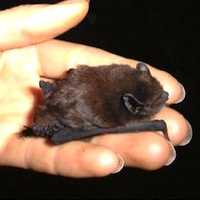
In most places of the world, the habitats of bats are threatened and in decline, in part because of the continued use of pesticides. In some parts of the world, like Indonesia, bat populations are diminishing because of intense hunting of the bats. The loss of these wonderful creatures has undesirable consequences for natural ecosystems and human economies.
There are more than 1200 species of bats that make up about one-fifth of all mammal species. Since the dinosaur age, bats have lived in most habitats on Earth, with the exceptions of the most extremely hot and dry desert areas, and the most cold and desolate polar regions. Extremely diverse, bats range from the world’s smallest mammal, the tiny bumblebee bat, weighing less than a single copper penny, to the giant flying foxes, with wingspans as broad as six feet.
Bats usually roost in dark, quiet, enclosed spaces where they are least likely to be disturbed by predators or inclement weather. Their natural habitats are caves and other such secluded areas. This is why your barn, shed or attic can be so attractive to a bat in search of a safe and peaceful place to rest and roost. Some species of bats are less picky and will roost in trees and dense foliage.
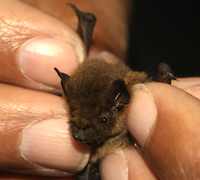
In understanding HOW to most effectively get rid of bats, it is important to understand that bats can fit into and hide in openings as small as 1/2″. This provides a bat with a huge selection of potential hiding, resting and roosting opportunities from nearly every man-made structure they come across. In man-made structures, some of the places that bats have been found include:
Attics, storage sheds, barns, unused and open structures, like dog houses, barns, stables, lean-to’s, chimneys, louvers, soffits, siding, eaves, behind shutters, broken or poorly fitted screens, loss or missing shingles or roof tiles.
In understanding WHEN to most effectively get rid of bats, it is helpful to know something about their mating habits.

Bats generally mate in the Fall and Winter months of September, October, November, December, January, February and March. In the Spring, the pregnant females will gather together in colonies within safe and secure locations in businesses, buildings, chimneys, underneath bridges, as well as in tree hollows, caves, mines and other area that are dark and feel safe to them. Baby bats are generally born in May, June and July. They grow up quickly, however, are not able to fly for three to four weeks. Baby bats are able to be on their own, hunting and finding insects independently, by two to three months of age.